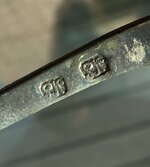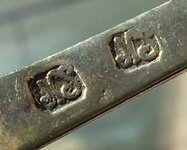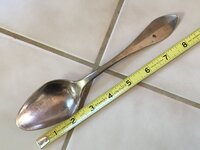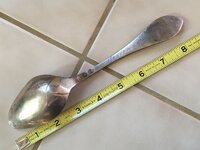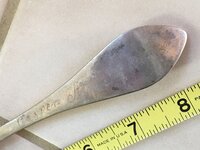HuntinDog
Bronze Member
Hi All,
I posted this in the Deus forum, but I think maybe I should have put it here for more of the question and answers people to see.
I found this a few years ago while detecting (with my new to me Deus) along a fence line of an old Victorian house in Vallejo.
I've always wanted to know a little more about it and it's hallmarks.
I posted the marks both ways so you wouldn't have to flip the image.
It also has hand peened into the handle Casper Stobe 1804.
If this is a true date than it is one old spoon!!
Thanks for any help you can give me with this one.
I posted this in the Deus forum, but I think maybe I should have put it here for more of the question and answers people to see.
I found this a few years ago while detecting (with my new to me Deus) along a fence line of an old Victorian house in Vallejo.
I've always wanted to know a little more about it and it's hallmarks.
I posted the marks both ways so you wouldn't have to flip the image.
It also has hand peened into the handle Casper Stobe 1804.
If this is a true date than it is one old spoon!!
Thanks for any help you can give me with this one.


